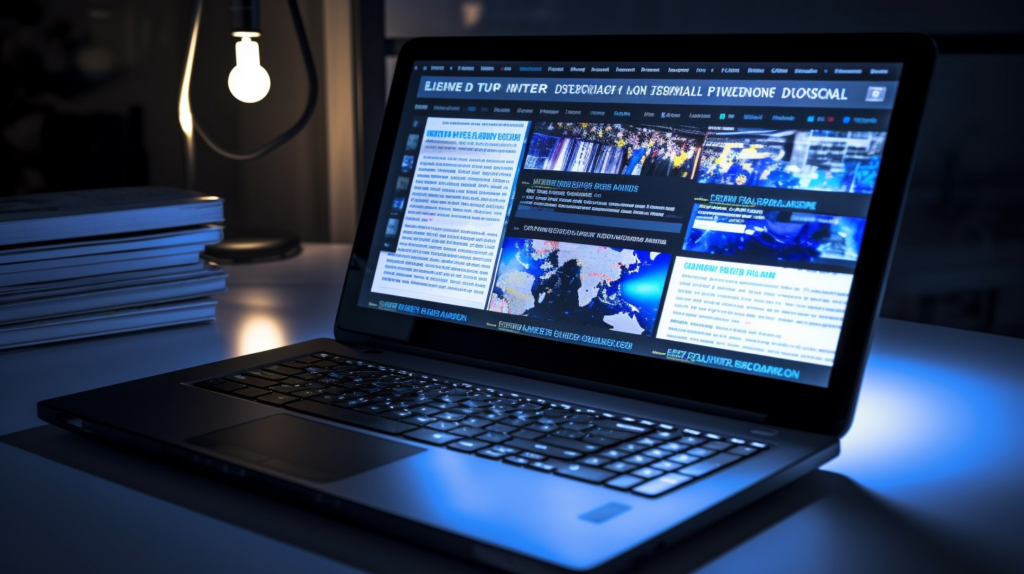Introduction:
The burgeoning robotics software market is poised to experience substantial expansion in the forthcoming years. The convergence of technological advancements and rising demand across diverse industries propels this growth. As Growing Robotics Software Market trends, opportunities, and future projections for this dynamic market, several significant insights come to the forefront:
1. Swift Market Expansion: The robotics software market is currently amid robust growth, propelled by the widespread adoption of automation, AI, and robotics technologies in sectors spanning manufacturing, healthcare, logistics, agriculture, and more. This upward trajectory is anticipated to persist as enterprises seek ways to augment their operational efficiency, productivity, and competitive edge.
2. Prominent Trends: Numerous trends are reshaping the landscape of robotics software. These include the ascent of cloud robotics, edge computing, swarm robotics, and the integration of machine learning and AI algorithms. These trends are propelling innovation and unlocking fresh prospects for applications in robotics.
3. Broad Industry Adoption: Using robotics software is no longer confined to conventional manufacturing and industrial domains. It has expanded its reach into diverse sectors, including healthcare, agriculture, construction, and even the consumer market, encompassing applications such as autonomous vehicles and household robots.
4. Global Reach: The robotics software market transcends geographical boundaries and is a worldwide phenomenon. Companies, startups, and research institutions across the globe are contributing to its growth and development.
5. Opportunities Abound: Within this market, numerous avenues exist for businesses and entrepreneurs. Crafting specialized robotics software solutions tailored to specific industries or applications, providing consulting and integration services, and making investments in research and development all hold the potential to lead to success in this arena.
6. Challenges to Address: While the robotics software market offers substantial promise, it is full of challenges. Addressing concerns related to safety, cybersecurity, data privacy, and the ethical implementation of AI in robotics is imperative. Additionally, the high initial costs and the intricacies associated with implementing robotics solutions may pose obstacles for some enterprises.
7. Projected Growth: Forecasts indicate that the market will sustain a steady growth trajectory, with compound annual growth rates (CAGR) reaching double digits. This momentum will be propelled by ongoing enhancements in software capabilities, the growing affordability of robotic hardware, and an increasing recognition of the advantages of automation and robotics.
Growing Robotics Software Market:

Growing Robotics Software Market (Image Source: ts2.space)
Customers looking to foresee investment possibilities, increase their market share, or launch new products will find this market research report’s insights on the robotics software industry extremely helpful. The research uses tried-and-true methods and technologies to demystify intricate market insights, presenting the information as graphs and charts for simple comprehension. The robot software market’s key drivers, restraints, challenges, and opportunities are all identified and analyzed in the report.
The analysis projects that the global robotics software market will increase between 2023 and 2030 at a compound annual growth rate (CAGR) of 23.9%, reaching a value of USD 45.54 billion. This suggests substantial room for expansion for companies engaged in this sector.
The study discusses several significant market-related topics, such as market size projections, industry-specific technology solutions, best practices, market dynamics, and competition analysis. Additionally, it offers information about the primary industries and end users for robotics software, including those in the automotive and aerospace, food and beverage, electronics, healthcare and life sciences, oil and gas, packaging, and logistics.
Staubli, UiPath, Metrologic Group, ISRA VISION, New River Kinematics, NordiaSoft, Aerotech, Inc., and Softomotive are some of the major competitors in the market.
Robot programming software, robot development software, and other product/service types are included in the report’s segmentation. Additionally, it considers historical data from 2017 to 2021, with 2022 as the base year and 2023–30 as the prediction period.
The Middle East, Africa, South America, Asia-Pacific, and North America are all included in the global analysis. The vendor landscape, regulatory and investment scenarios, market effect factors, complete pricing analysis, and growth potential in the robotics software market are highlighted in the study.
In conclusion, this research study offers valuable information on the robotics software industry, assisting companies in making decisions and seizing growth chances. The study is a trustworthy resource for understanding market dynamics and potential trends thanks to its thorough analysis and market intelligence.
To sum up, the robotics software market offers abundant prospects for those ready to innovate and surmount the hurdles it presents. The fusion of robotics, AI, and software technologies is reshaping various industries and giving rise to fresh avenues for business prosperity. Maintaining awareness of the most recent trends and emerging technologies will be imperative for success in this swiftly evolving marketplace.
My name is Sai Sandhya, and I work as a senior SEO strategist for the content writing team. I enjoy creating case studies, articles on startups, and listicles.
